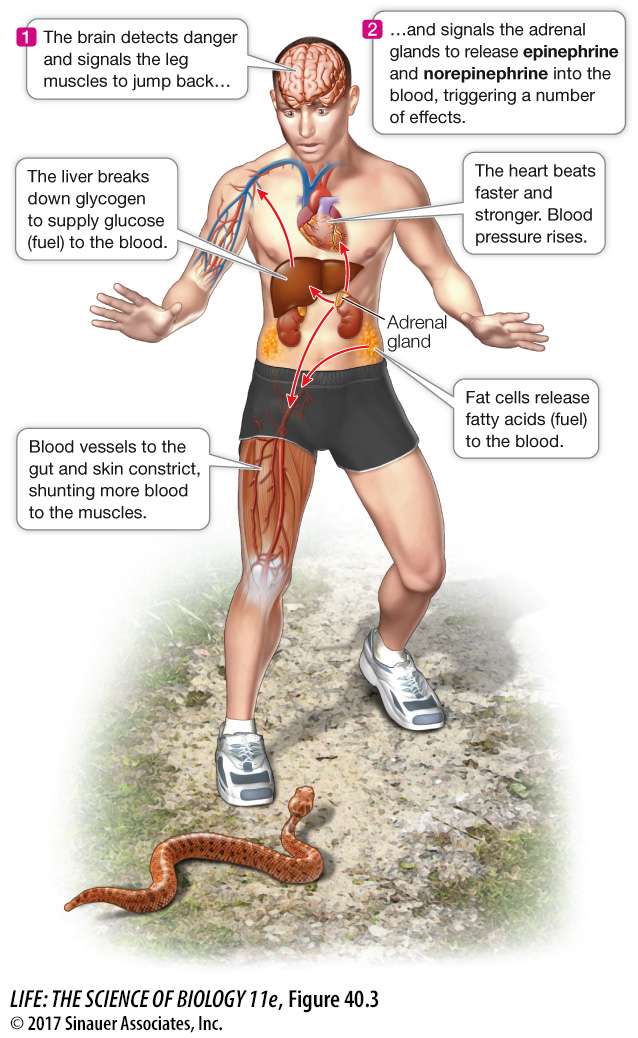Hormone action depends on the nature of the target cell and its receptors
Wherever a hormone encounters a cell with an appropriate receptor, it can bind to that receptor and trigger a response. The nature of the response depends on the signal transduction pathways of the responding cell. Therefore the same hormone can cause different responses in different types of cells.
Consider the amine hormone epinephrine, and the closely related amine hormone as well as neurotransmitter norepinephrine. Both of these molecules are involved in the well-known fight-or-flight response (Figure 40.3). Suppose you are walking in the forest and almost step on a rattlesnake. You jump back, your heart starts to thump, and protective reactions are set in motion. The jump and the heart thumping are driven by your rapidly responding sympathetic nervous system (see Figure 46.8) which uses norepinephrine to signal target cells. Simultaneously with these muscular responses, your sympathetic nervous system stimulates endocrine cells in the adrenal glands just above your kidneys to secrete both epinephrine and norepinephrine. These hormones rapidly diffuse into your blood and circulate around your body, activating the many components of the fight-or-flight response.

Figure 40.3 The Fight-or-Flight Response The brain of a person suddenly faced with a threatening situation sends a signal to the adrenal glands, which almost instantaneously release the hormones epinephrine and norepinephrine. Epinephrine and norepinephrine circulate around the body and induce the various components of the fight-or-flight response in different tissues.
Epinephrine and norepinephrine bind to receptors in your heart, causing a faster and stronger heartbeat. Your heart is now pumping more blood. Epinephrine also binds to receptors in certain blood vessels. By causing constriction of blood vessels supplying your skin, kidneys, and digestive tract (digesting lunch can wait!), the hormone diverts more blood to the muscles needed for your escape from danger.
Epinephrine binds to cells in the liver, stimulating them to break down glycogen and release glucose into the blood as a quick energy supply (see Figure 7.15). In fatty tissue, epinephrine stimulates the breakdown of fats to yield fatty acids—another source of energy. These are just some of the actions triggered by one hormone. In each case the cellular response depends on the cell’s receptors, its associated intracellular signaling cascade, and the mechanisms activated by that signaling cascade. All of the diverse cellular responses activated by epinephrine and norepinephrine increase your chances of surviving a dangerous situation.
